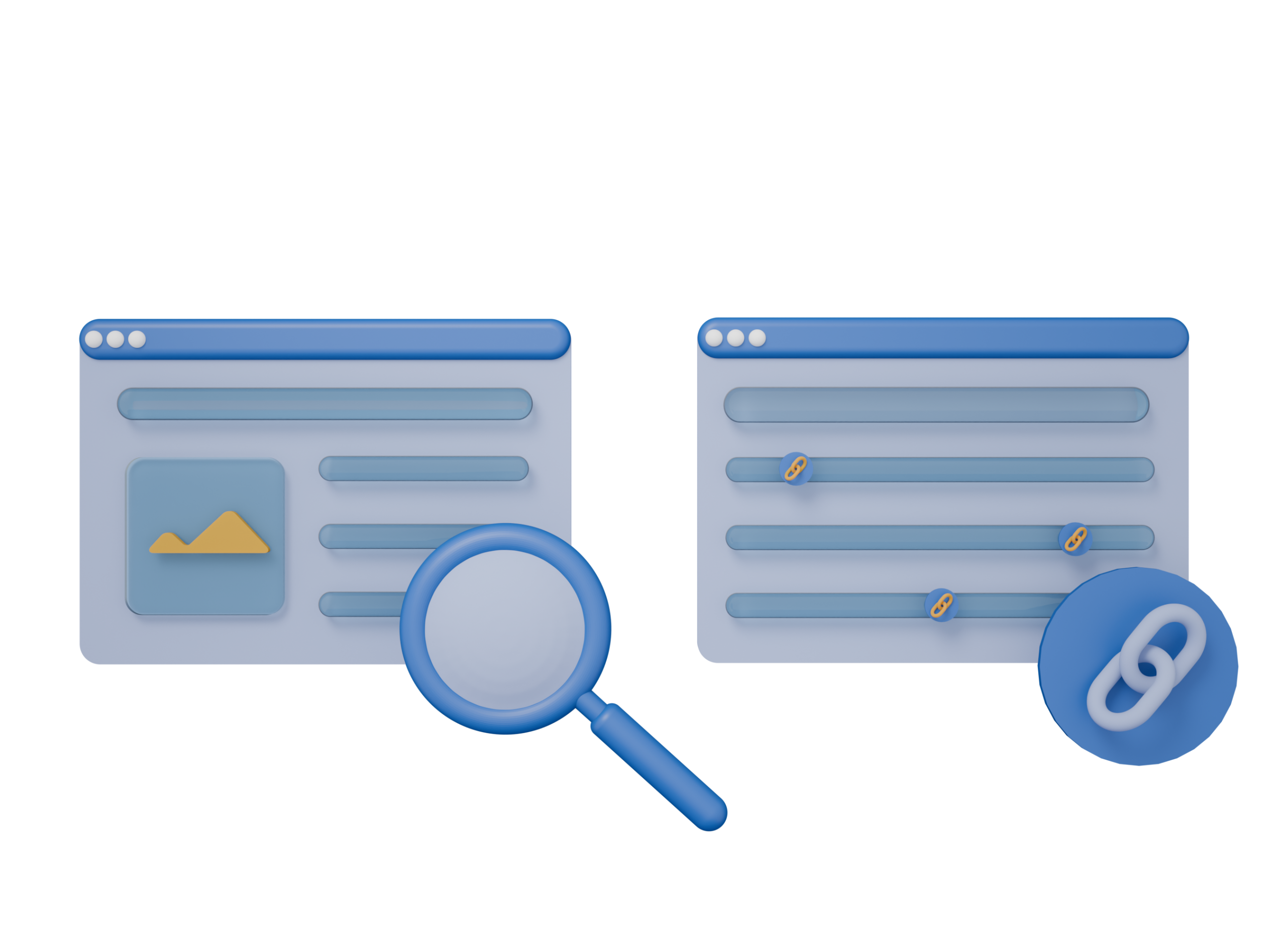Having a website that search engines love. Isn’t this a dream of almost all businesses?
That’s where SEO comes in, helping you improve your website’s visibility.
But if you’re not clear on the different types of SEO, terms like “on-page” and “off-page” can get confusing fast.
So, let’s break it down. In this guide, we’ll compare on page vs off page SEO and show how each one plays a role in your site’s success.
Let’s get started.
What is On Page SEO?
On page SEO is the process of improving your website pages by working directly on them to help them rank better in search results.
It includes optimizing and updating your content, building a strong keyword strategy, creating effective internal linking, and much more.
On site SEO optimization, when done right, can help search engines easily index your pages and understand what your content is about.
But it’s not just about bots, it’s also about people. Good on-page SEO makes your site clearer, faster, and more useful, so users are more likely to stick around and take action (e.g., making a purchase or signing up for a newsletter).
What is Off Page SEO?
Off page SEO involves different actions taken outside of your website to improve its authority.
While it includes different strategies like digital PR, the backbone of off page SEO is link building. It’s the process of getting backlinks from other websites to your.
Investing in off site SEO smartly can boost your website’s credibility and authority, so search engines can consider it “worthy” of high rankings.
Why? Backlinks remain one of the main ranking factors. According to a Semrush study, 8 of the top 20 factors linked to higher search rankings are related to backlinks.
However, you really need to be strategic when building backlinks. It includes investing in white hat link building tactics and waiting for great results.
Further reading:
Importance Of Backlinks
Key Difference Between On Page and Off Page SEO
It’s high time to clear things up: Here’s how on page and off page SEO actually differ.
- Focus
One of the main differences is the focus of your efforts. With on site optimization, you do “inside work” to improve your content, headings, internal links, and more.
On the other hand, off site optimization is about working outside of your website to make it more trusted. In other words, building backlinks from non-shitty, aka SaaS or agency sites.
- Goal
On site SEO aims to improve content’s visibility in search results, user experience, and achieve higher rankings. On the other hand, off site page optimization tries to build website authority and credibility thanks to backlinks.
But let’s be clear. Even though they work in different ways, both on site and off site SEO have the same main goal: to improve your website’s rankings.
P.S. If you want to learn more about different types of SEO, check out our YouTube video too.
How to Optimize Key On Page SEO Elements: Our Approach
Now, let’s understand how to do effective on site SEO optimization.
These are the steps we use on our own and our clients’ sites when needed.
Everything starts with a website audit to get a clear picture of all existing on page issues.
There are several tools that can be handy during this process. We use the Screaming Fog to check how well on-page elements are optimized.
All you need is to crawl your domain using the tool and head to “Issues” section.
It not only lists all the issues but also classifies them by priority. For example, pages without internal links is a high priority issues, whereas pages with missing H1 ar medium priority issues.
Regardless of the priority level, we recommend fixing all these issues step by step if you want to have an SEO-friendly website.
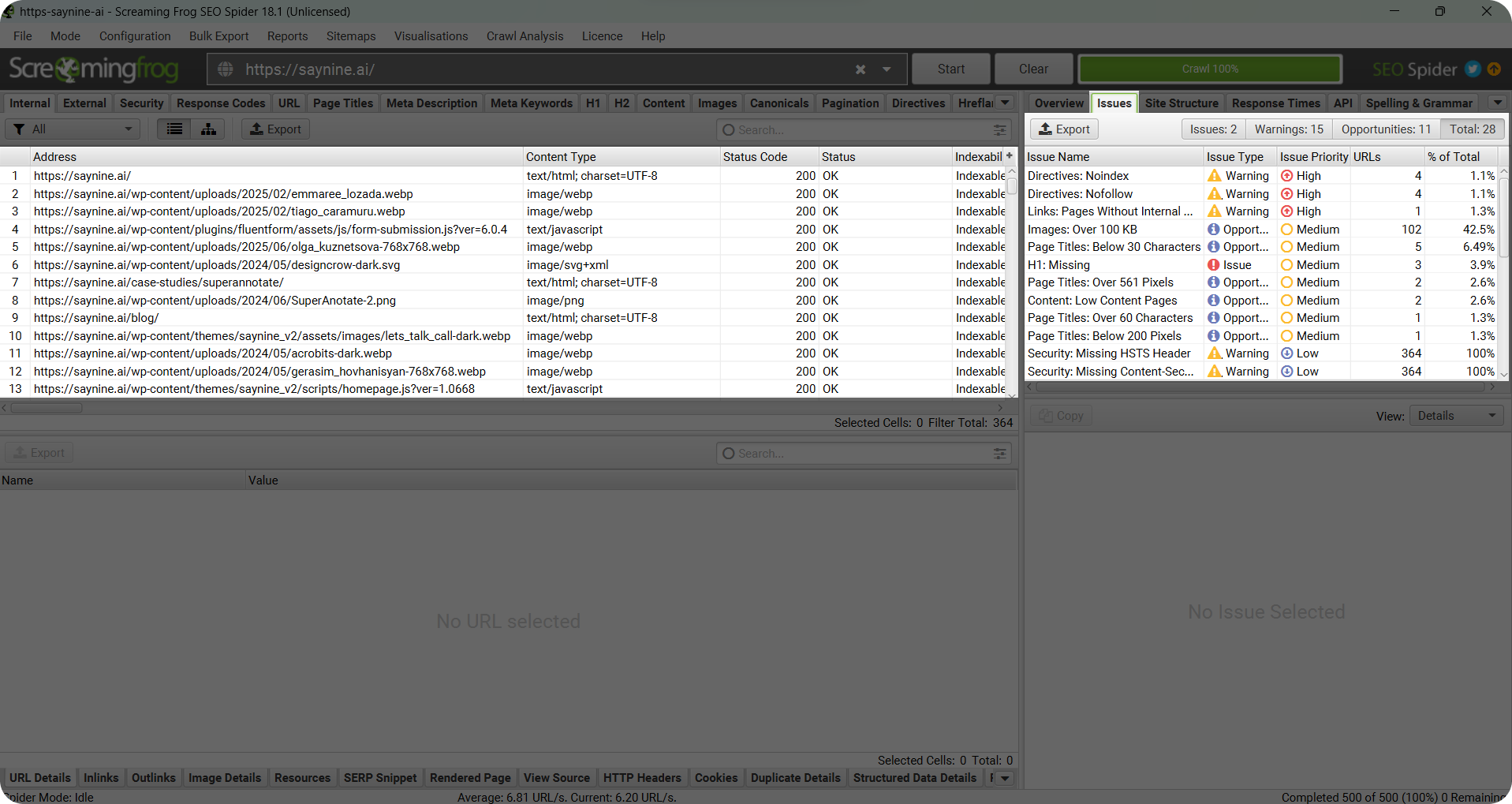
To improve these issues, we recommend following these basic steps:
- Create great content
To become a top favorite of Google, you need to create truly exceptional content. Ideally, it should contain information and tips based on your experience, and your readers can’t find them anywhere.
Basically, you need to follow the Google E-E-A-T (Experience, Expertise, Authoritativeness, and Trustworthiness) guide. It emphasizes the importance of creating content based on your own first-hand experience and shows your expertise on the topic.
This is true for SayNine’s content strategy as well. When reading our articleս, you will learn helpful tips and real-life hacks from our team based on our experience.
- Build a strong keyword strategy
Keywords are the core of a successful on page SEO strategy. They still remain an important ranking factor.
Let’s learn Google’s stance on keywords in its guide that explains how Google ranks search results:
“The most basic signal that information is relevant is when content contains the same keywords as your search query. For example, if those keywords appear in the headings or body text of a webpage, the information might be more relevant.“
So, you need to do detailed keyword research to find relevant primary keywords and secondary ones and use them naturally in different parts of your content. This will help search engines understand what it is about.
Talking about our perspective, our content and SEO teams work closely together to ensure our content is helpful but also keyword-rich.
- Optimize your meta tags
The first thing users see when doing research is the meta tags, so it makes sense why optimizing them matters.
A common issue is going over the character limit. In the screenshot below, you can see this issue was detected for one of our clients, too.
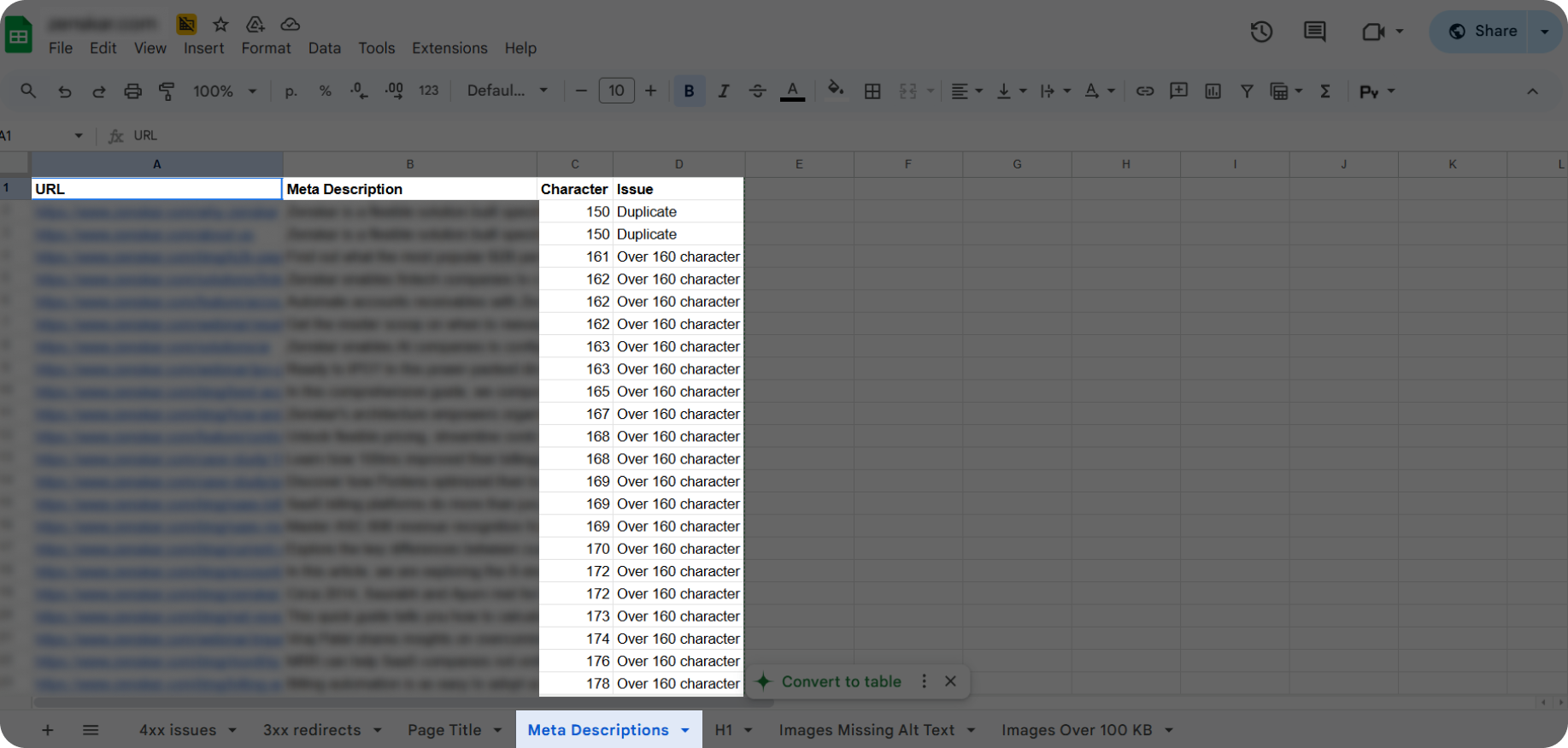
So, it is important to follow this rule:
- Meta titles: up to 60 characters.
- Meta descriptions: up to 160 characters.
Another thing is integrating your focus keywords in your meta tags. Just be careful to avoid keyword stuffing and overusing your target phrases. Do this process as naturally as possible.
It will also be a good choice to analyze ranking articles and check the patterns they use. It can include using numbers in meta tags (e.g., “15 Essential Types of Backlinks that Impact Your SEO“) or adding specific dates (e.g., “Link Exchange: A Simple Guide for Beginners in 2025”).
Further reading:
Duplicate Meta Descriptions
- Write Strong H1 Titles
Your H1 (blog title) should be catchy and engaging, but also include your target keyword. The character limit for it is 70.
But there is another common mistake to avoid: having identical H1s and meta titles.
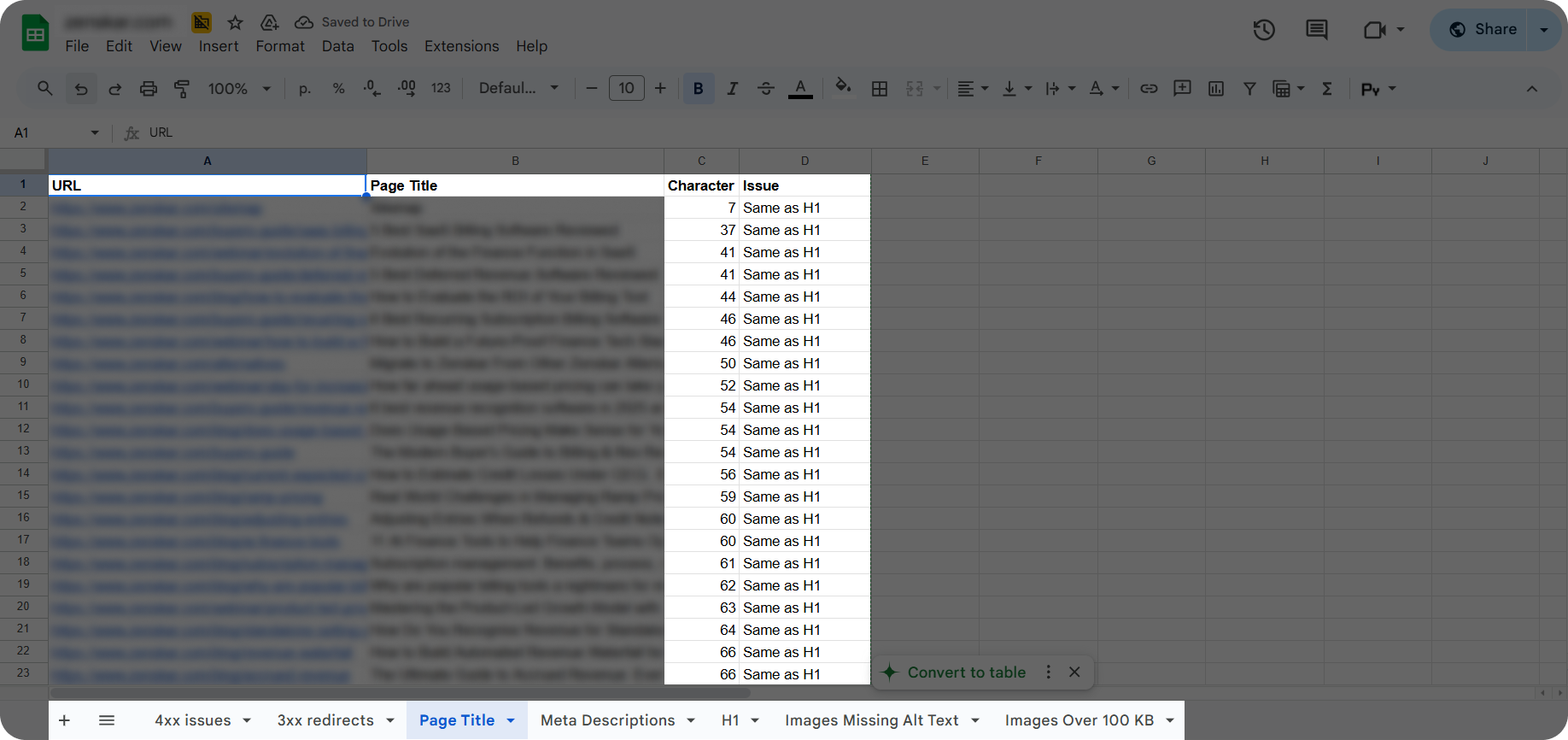
This is an issue that needs to be addressed to avoid duplicacy.
- Create a proper URL structure
A clear URL structure helps search engines crawl your site efficiently. Plus, descriptive URLs give users an idea of what the page is about before clicking.
Here are our tips for creating a clear and effective URL structure.
First, your URL should include your main keyword. It can be a shorter version or just the keyword itself.
Let’s say your article title is: “How to Overcome 7 Common Link Building Challenges“.
Your URL can be like this: https://saynine.ai/blog/link-building-challenges/
Use hyphens and slashes in URLs to improve readability and clearly define structure. Avoid spaces, too, as they can break links and make URLs harder to read.
Now, let’s understand how and when you can change your URLs. If your URL is too long but still gets traffic, it’s better not to change it.
But in case you need to change them, it’s important to redirect your URL. It’s a process where you automatically send users and search engines from one page to another. It helps to ensure your website visitors reach the right content.
- Write good alt texts
Your images make content more eye-catching, but should have alt text as well. You can naturally include your target keywords and describe the image so that search engines understand your page’s content.
You can use up to 100 characters for your alt texts.
For instance, for this screenshot, a possible alt text could be the following.
“”Gmail error message showing that an email was blocked by the recipient’s server.”
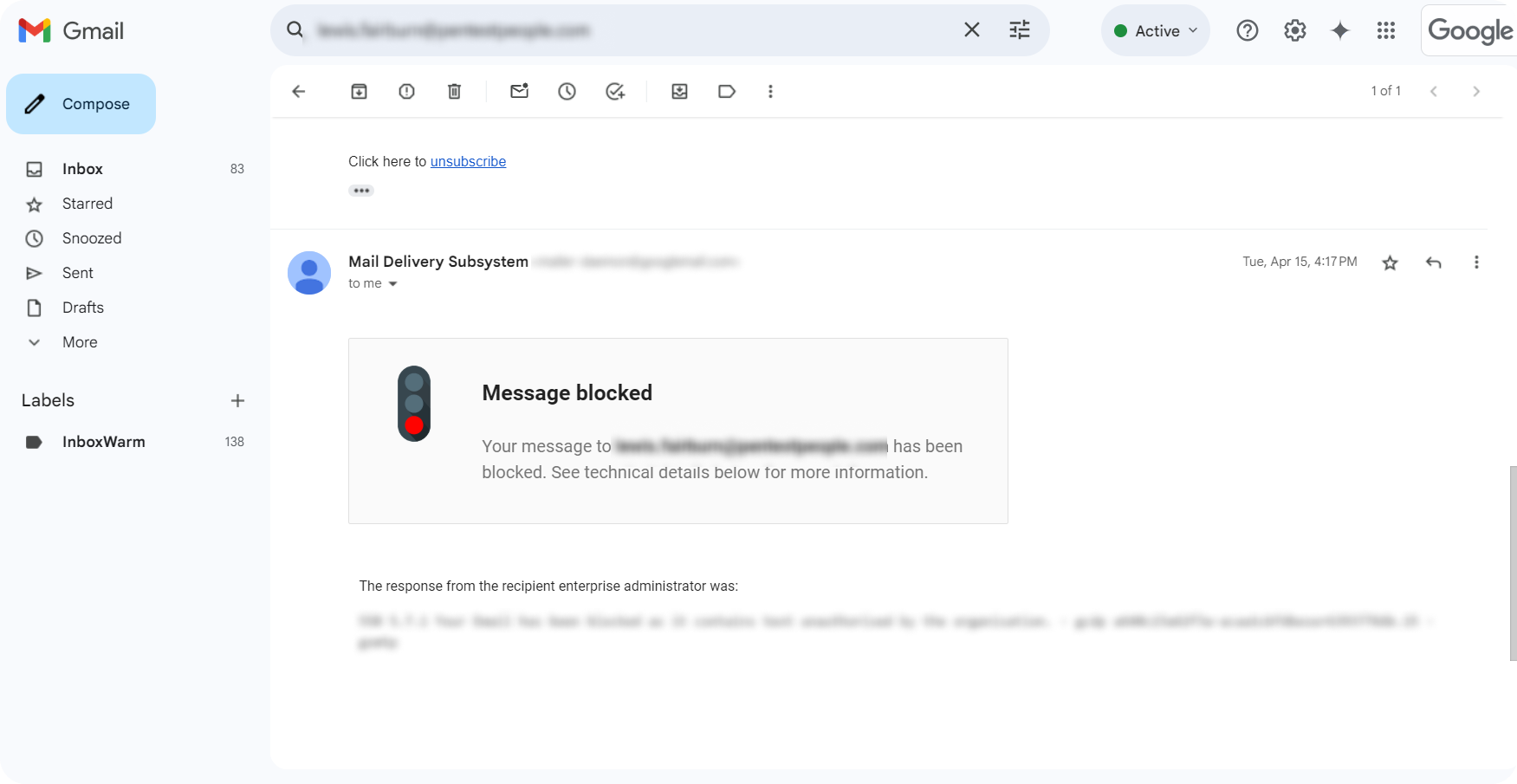
- Build solid internal linking strategy
A strong internal linking strategy can improve your website SEO by making it easier for search engines to find and index your pages.
Speaking about our experience, when we create a new blog post, we ensure that it has relevant internal links. The number of internal links depends on the word count of your article.
For 1500-200 articles, you should ensure it has at least 4-5 internal links. Also, make sure your website doesn’t have any orphan pages, which are pages without any internal links.
The thing is, you should ensure that they are added naturally and with relevant keywords.
- Add external links as well
Having internal links in place is ok, but what about other sources you need to share?
Not having external links isn’t the major issue, but they improve your website’s SEO score.
Let’s share how we do this process. There are no strict rules on how many external links our articles should have. The process happens kind of naturally. But, the sources should be relevant and fresh.
If you are adding some statistics or research done by others, it’s highly important to cite them.
Plus, it’s useful to add external links also when you are mentioning a concept but does not cover it deeply. You can simply add an external link, so readers can go through it and explore the topic more.
Now, as you can see, on page SEO optimization takes a lot of effort and time. But you know that it’s important because on-site issues can slow your website’s growth. If you don’t have the resources to fix them, check out our SEO services to see how we can help.
Off Page SEO: Tested Strategies That Deliver Results
Here are a few effective ways to run effective off page SEO campaigns and build backlinks that make a real difference in your rankings and traffic.
- Do three-way link exchanges to build relevant backlinks from trusted sources.
- Build backlinks naturally by creating linkable assets, aka compelling content that attracts links organically.
- Prioritize ethical link building and avoiding toxic backlinks like PBNs or link forums.
- Get backlinks from websites with good link building metrics. For us, those metrics are 50+ DR, 1K Traffic.
- Ensure those backlinks are websites that present legitimate businesses.
- Be consistent and regularly build backlinks for long-term and steady SEO growth.
For more in-depth insights, tips, and tools, we recommend taking a look at our comprehensive guides on:
Link Exchange Guide
SaaS Link Building
Link Building Campaign
On Page vs Off Page SEO: Which is More Important?
Should you spend more time optimizing your site itself or building its reputation elsewhere?
The short answer: you need both. Google looks at on-page elements like content and structure, along with off-page signals like backlinks, when deciding how to rank your site.
But here’s the thing: every site is different. What works for one might not work for another. Think about what your goals, audience, and budget are. Then build your strategy around that.
To Sum Up
Alright, we’ve broken down the difference between on-page and off-page SEO.
One thing is clear that your website needs both to become “Google famous”.
Whether you need to optimize your website’s on page elements or get relevant, valuable backlinks, contact us, and we’ll create a strategy to help reach your SEO goals.
FAQ about On Page vs Off Page SEO
Is local SEO on-page or off-page?
Local SEO involves both on-page elements, like optimizing your site for local keywords, and off-page factors like managing online reviews and local citations.
Are keywords on-page or off page SEO?
Keywords are primarily an on-page SEO factor, as they help optimize your content and meta tags to match what people are searching for.
Is on page or off page SEO more important?
Both matter a lot. On-page SEO ensures your site is well-structured and relevant and off-page SEO builds your site’s reputation.
